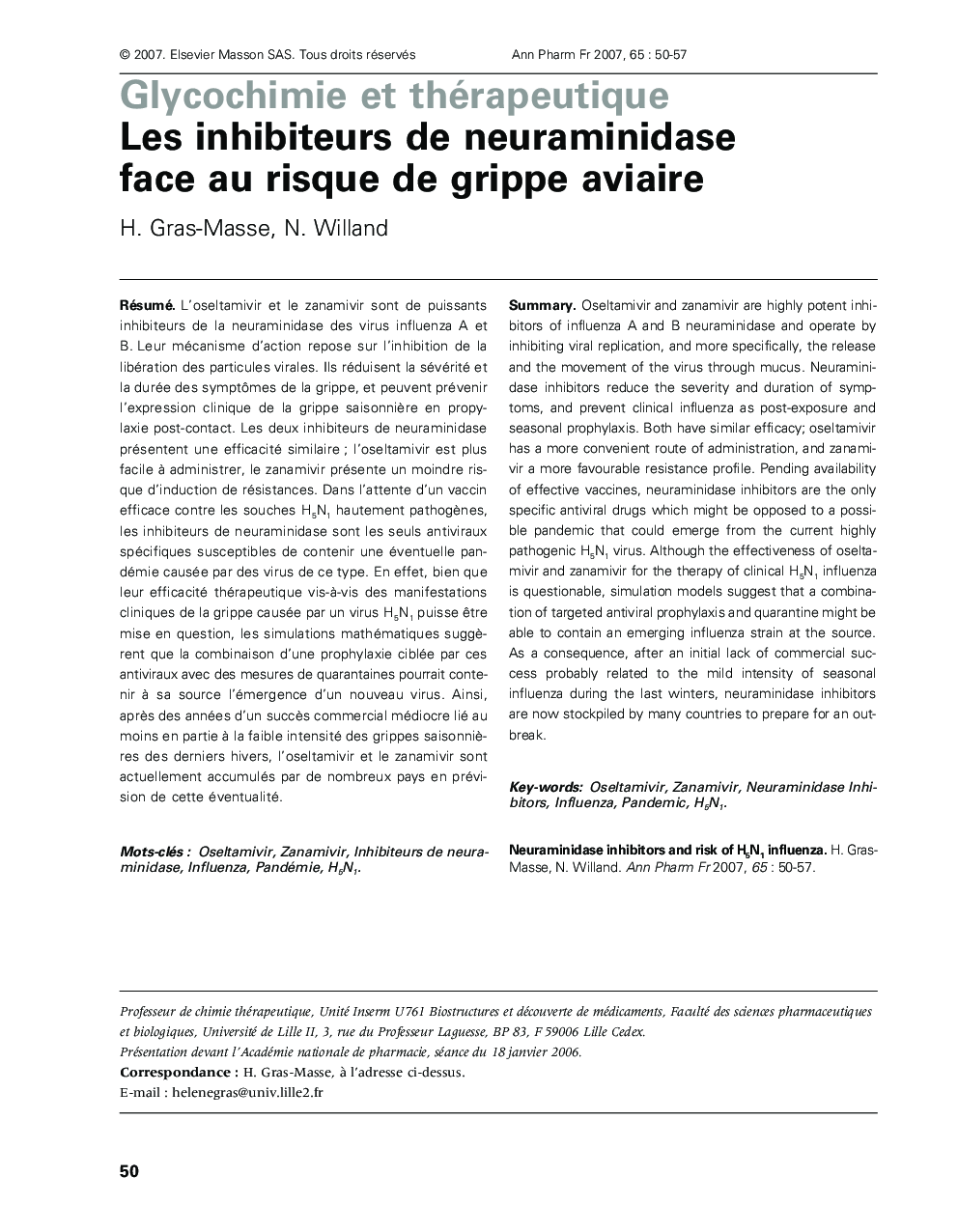| Article ID | Journal | Published Year | Pages | File Type |
|---|---|---|---|---|
| 2478543 | Annales Pharmaceutiques Françaises | 2007 | 8 Pages |
Abstract
Oseltamivir and zanamivir are highly potent inhibitors of influenza A and B neuraminidase and operate by inhibiting viral replication, and more specifically, the release and the movement of the virus through mucus. Neuraminidase inhibitors reduce the severity and duration of symptoms, and prevent clinical influenza as post-exposure and seasonal prophylaxis. Both have similar efficacy; oseltamivir has a more convenient route of administration, and zanamivir a more favourable resistance profile. Pending availability of effective vaccines, neuraminidase inhibitors are the only specific antiviral drugs which might be opposed to a possible pandemic that could emerge from the current highly pathogenic H5N1 virus. Although the effectiveness of oseltamivir and zanamivir for the therapy of clinical H5N1 influenza is questionable, simulation models suggest that a combination of targeted antiviral prophylaxis and quarantine might be able to contain an emerging influenza strain at the source. As a consequence, after an initial lack of commercial success probably related to the mild intensity of seasonal influenza during the last winters, neuraminidase inhibitors are now stockpiled by many countries to prepare for an outbreak.
Keywords
Related Topics
Health Sciences
Pharmacology, Toxicology and Pharmaceutical Science
Drug Discovery
Authors
H. Gras-Masse, N. Willand,
